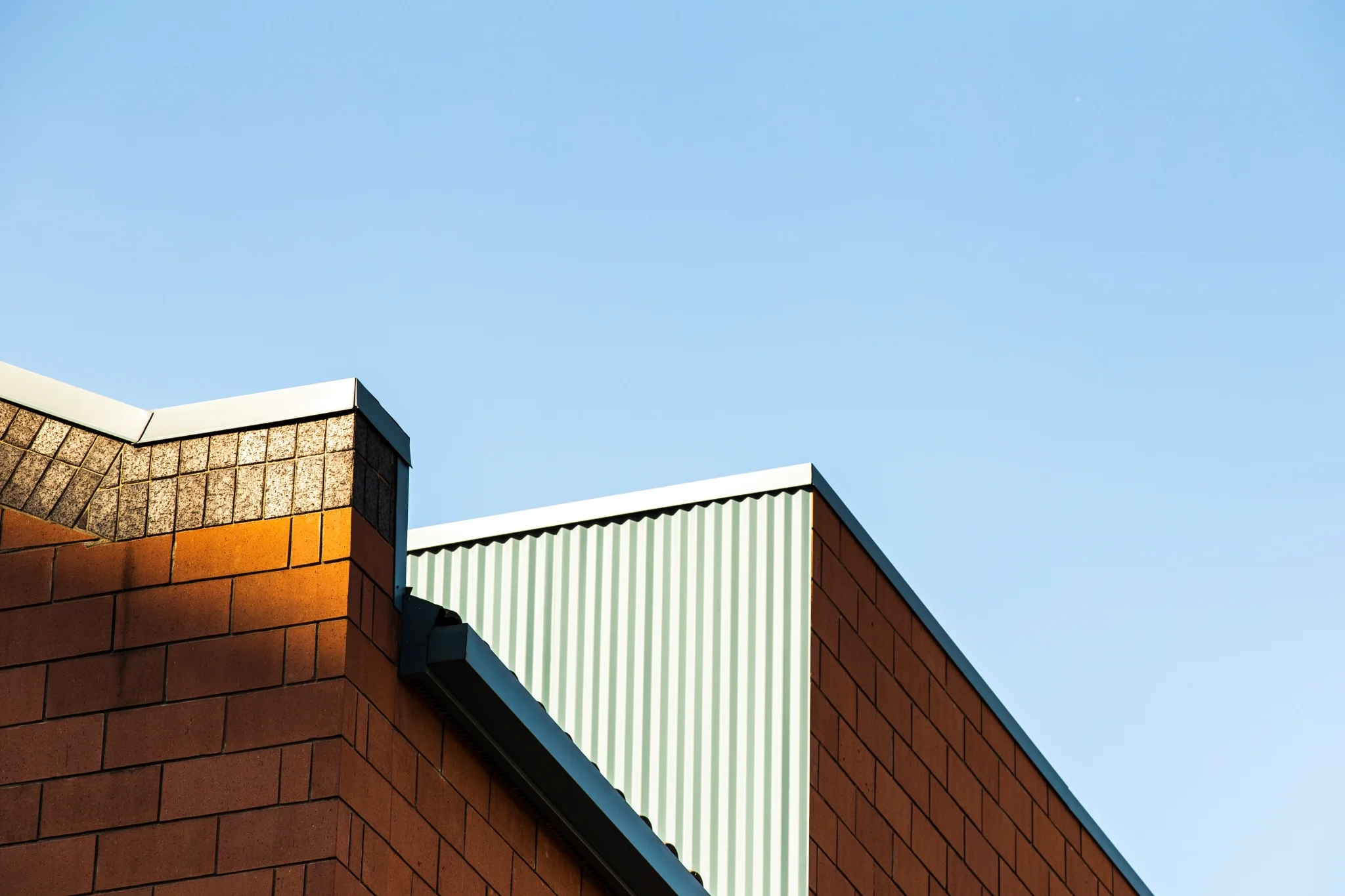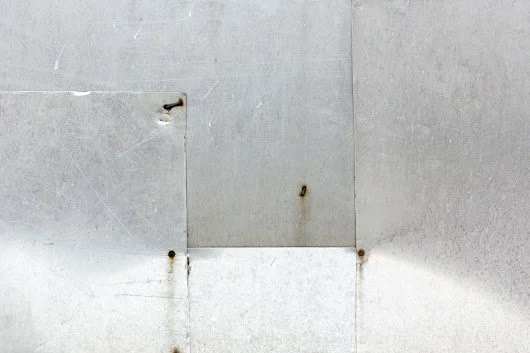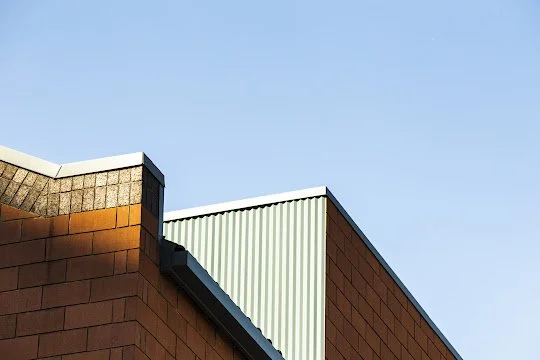How to Compare Flat and Sloped Commercial Roofing Systems
Commercial roofing comes in two main style families: flat and sloped. Businesses across Texas, Arkansas, and Louisiana use both, and each system offers trade-offs for roof repair, replacement, or new builds. Choosing a system backed by reliable commercial roofing services balances durability, efficiency, cost, and long-term value.
Flat Roofing Systems
Flat roofs are common on warehouses, schools, and retail centers. They use membranes such as TPO, EPDM, or modified bitumen. Their main advantage is cost. They also create usable space for HVAC units or solar panels. The drawback is drainage. Water does not run off quickly, which increases the risk of pooling and leaks. Regular inspections are vital. Most flat-roof leaks stem from blocked drains or punctured membranes. Wouldn’t you rather schedule a quick roof repair in mild weather than face business downtime after water infiltrates your building?
Sloped Roofing Systems
Sloped roofs, often seen on office complexes or mixed-use buildings, shed water more efficiently. The slope reduces pooling and can extend the life of the system. Metal panels, shingles, or tile are common materials. Sloped roofs handle storms well but cost more to install, especially on large commercial buildings. They also limit rooftop use, making HVAC or equipment placement more challenging. A well-installed sloped system, however, can last decades with proper care.
Benefits of sloped commercial roofing systems
Faster water runoff that reduces pooling and leak risks
Longer expected lifespan with fewer major repairs
Greater resistance to hail and storm damage
Multiple design and material options for aesthetics
Lower risk of warranty disputes due to drainage issues
Consider This Scenario
A property manager oversees two buildings. The flat-roofed warehouse has easy access for maintenance crews but requires regular drain cleaning to avoid water damage. The sloped office building rarely pools water, but costs more to repair after a hailstorm dents multiple panels. Both systems demand attention, just in different ways. The lesson is that choosing the right system depends on how you balance cost, function, and appearance.
Professional Guidance Matters
Codes and standards established by the National Roofing Contractors Association (NRCA) highlight that professional design and installation can extend the lifespan of commercial roofs, reduce leaks, and help ensure warranty compliance. A commercial roofing contractor can evaluate building use, weather exposure, and maintenance needs to recommend the best option. For larger facilities, engaging commercial roofing services early in planning helps align design choices with drainage, energy, and maintenance goals. Long-term success comes from pairing the right design with consistent inspections and timely repairs.
Local Considerations
Regions like West Texas, Northwest Arkansas, and Northern Louisiana present different weather stresses—hail, wind, sun exposure, and large temperature swings. A local roofing team understands these challenges and can help ensure your roofing system (flat or sloped) is designed, installed, and maintained to handle them.
Choosing the right commercial roofing system isn’t just about upfront cost; it’s about protecting your business, minimizing downtime, and avoiding surprise repair expenses. Don’t wait until flashing fails. Schedule a quote with commercial roofing with experts who know your region’s climate and code requirements.
Common Causes of Roof Leaks and How to Address Them
Residential and commercial roofing systems are designed to last, but even the strongest materials can be compromised. When that happens, the consequences include lost productivity, damaged equipment, and unexpected repair bills. Sometimes it’s just a drip during a rainstorm, but that small problem can point to bigger threats. Knowing what causes leaks will help you stop the damage before it spreads.
What a Roofing Contractor Looks For
Your roofing contractor will begin by checking common problems:
Flashing – Seals the joints around your vents, walls, and skylights, but it can loosen or rust with time.
Seams – Areas between roofing materials wear out or become damaged.
Rooftop Penetrations – Will deteriorate, leading to decay and leakage.
Age and Condition – It is important to inspect older roofs or those that have been patched more than once.
Dangers of Standing Water
If water pools for more than two days, it may be time for roof repair or replacement. Over time, that weakens the roof, leads to cracks, and allows water to soak into the layers underneath. This kind of ponding usually happens because of issues that are easy to miss until it’s too late.
Aging Materials Deteriorate
Even the toughest materials wear out. Sunlight, harsh temperatures, and years of use cause roofs to dry out and lose efficiency. Water can penetrate the roof after it begins cracking or shrinking. Older roofs are also more likely to have patchy repairs, which don’t always hold up.
Commercial Roof Considerations
Commercial roofs take more abuse than many you may realize. HVAC technicians, maintenance crews, and installers often walk across the surface, carry tools, or move equipment. It only takes a few rough steps or a shifted panel to cause lasting damage.
Notes on Drains and Gutters
Drainage matters, but it’s often overlooked. When drains or gutters get blocked by debris, water backs up and pools around vulnerable spots. That added weight and pressure can lift flashing or force water into the seams. In winter, ice can have a similar effect, even on commercial roofs that are otherwise in good shape.
Beware of Quick Fixes
A quick fix might stop a leak, but if it’s not done right, it won’t last. Using the wrong materials or skipping surface prep leads to patches that peel, crack, or trap moisture underneath. Instead of solving the issue, these repairs often create new weak spots. A good repair restores the system’s integrity and appearance.
Improperly Sealed Penetrations
Every time a new piece of equipment is added to the roof, it means cutting a hole known as a penetration. If it isn’t sealed properly, it becomes a direct path for leaks. Over time, weather, vibration, and thermal expansion wear down even well-installed gaskets and sealants. It only takes a tiny gap to create a major leak inside. Leaks may start small but rarely stay that way. Knowing the common causes– whether it’s flashing, foot traffic, or clogged drainage– helps you stay ahead of potential damage. Regular inspections and trusted maintenance go a long way toward keeping your roof watertight.
Consider the Benefits of TPO Roofing for Commercial Buildings
If you manage a commercial property, you know the importance of your roof for protection, keeping costs down, and allowing uninterrupted operations. For flat-roof commercial roofing, TPO roofing offers heat reflection, strong weather resistance, and low maintenance in a single dependable system. Building owners often choose TPO not just for the upfront savings, but because it keeps delivering value for years after installation.
Why TPO Is a Smart Pick for Roofing Contractors
Roofing contractors often recommend TPO because it installs efficiently and performs well. The membrane comes in large rolls, minimizing the number of seams across the surface. Those seams are heat-welded to create watertight connections that hold up against leaks, wind, and ponding. TPO also adapts to temperature changes, making it suitable for wide surfaces that expand and contract throughout the seasons.
Efficient and Cool by Design
TPO’s reflective white surface helps keep commercial roofs cooler by bouncing back ultraviolet rays. That’s especially helpful in hot climates or buildings with intense indoor heat. By lowering rooftop temperatures, TPO eases the burden on HVAC systems, reducing energy costs. Those savings can add up, especially for businesses that operate around the clock.
Less Maintenance, Fewer Repair Needs
TPO resists damage from chemicals, sun exposure, and physical impact or debris. This means fewer service calls for roof repair during its lifespan. When paired with routine inspections and light cleaning, TPO protects your building for up to 30 years.
Installation Speed Reduces Downtime
Another practical benefit you get with TPO is how quickly it can be installed. Contractors can move fast, covering large areas in a short time thanks to its wide-roll format and straightforward fastening system. A speedy installation is valuable because of reduced interference with daily operations.
A Cleaner Surface That Stays That Way
TPO naturally resists dirt, mold, and algae without extensive maintenance. A cleaner roof performs better over time. Because grime and biological buildup can harm other materials, the easy-to-maintain surface of TPO gives it a clear advantage. It also handles light foot traffic well, useful for buildings requiring rooftop access or equipment.
Designed for Sustainability and Longevity
TPO is made without chlorine and can be fully recycled at the end of its service life. By investing in more environmentally friendly solutions, you can meet energy efficiency targets. You may also qualify for green building incentives. TPO provides performance and peace of mind, allowing you to focus on your business instead of your building.
Withstands the Demands of Commercial Sites
Your commercial roof faces more stress than most residential systems. From heavy HVAC units and regular exposure to unpredictable weather, they demand robust materials. TPO is engineered to meet those needs. It resists tearing, seals tightly around roof penetrations, and maintains its strength.
TPO roofing continues to stand out for commercial use by covering key priorities, including long-lasting protection, energy savings, and dependable performance. For building owners looking for a roof that can take on the everyday challenges of commercial life, TPO delivers exactly what’s needed with proven results.


